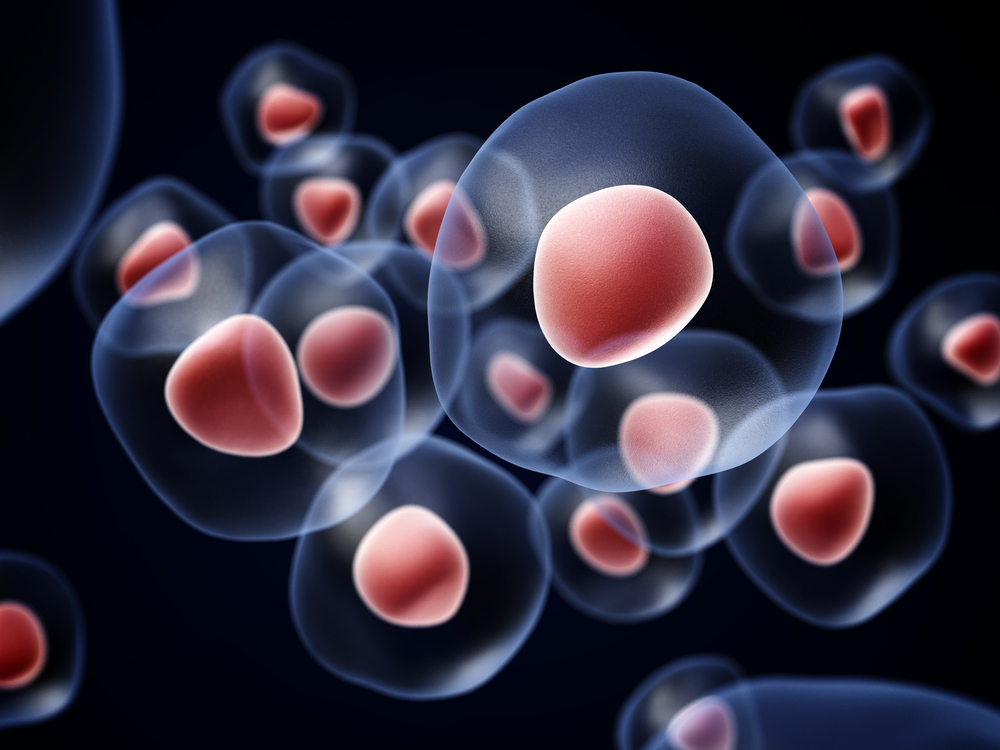Machine Learning Helps Predict Stem Cell Transplant Outcomes, Study Suggests

Using a computer-based analysis to profile gene activity in blood samples may help identify the severe scleroderma patients who are most likely to respond to a stem cell transplant, a study suggests.
That, in turn, will ultimately lead to better outcomes and faster improvement post-transplant for those who undergo the difficult procedure, the researchers said.
The study, “Machine learning predicts stem cell transplant response in severe scleroderma,” was published in the journal Annals of the Rheumatic Diseases.
Data has shown that hematopoietic, or blood-forming, stem cell transplants (HSCT) have a greater potential to improve the outcomes of people with severe scleroderma when compared with the immunosuppressant Cytoxan (cyclophosphamide), a standard treatment. That was the finding of the SCOT Phase 2/3 trial (NCT00114530), which showed improved overall survival among transplant patients.
However, HSCT is an intensive, expensive procedure that can lead to severe complications and is not feasible for all patients.
Thus, identifying patients who are likely to benefit most from HSCT is essential to ensure the treatment’s efficacy.
Continuing prior work, a group of researchers at the Geisel School of Medicine at Dartmouth assessed whether machine learning could help predict who is more likely to respond to HSCT.
Specifically, they evaluated the activity (expression) levels of genes in blood samples collected from a representative sample of 63 SCOT trial participants (average age 45 years). Most patients were women (60.3%), never smoked (73%), and were Caucasian (76.2%).
In SCOT, 30 of them had been randomly assigned to receive HSCT while 33 were given treatment with Cytoxan. Blood samples were collected at the start of the trial (baseline) and at specific timings up to 54 months, or 4.5 years, after receiving treatment.
Altogether, the researchers analyzed samples from participants who completed the treatment protocol, who either underwent HSCT or had at least nine doses of Cytoxan.
With the use of a computer-based analysis of gene activity, the patients were divided into three groups according to their initial genetic profile: normal-like, inflammatory, or fibroproliferative. Notably, fibroproliferative means proliferating fibroblasts, the cells primarily responsible for producing collagen, a protein that builds-up in fibrosis (scarring).
Compared with data from 28 age- and sex-matched healthy individuals (controls), all three subsets showed different activity of multiple genes. However, both the inflammatory and proliferative subsets revealed a substantially higher number of genes with altered activity than the normal-like group, representing differences in biological processes.
In the group of patients given Cytoxan, 12 participants were normal-like, 12 were in the inflammatory subset, and nine in the fibroproliferative subset. Among those who underwent HSCT, 10 were normal-like, eight were in the inflammatory group, and 11 were assigned to the fibroproliferative subset.
Further analyses revealed that those who had a profile enriched in inflammation-associated genes tended to have improved outcomes when given HSCT compared with patients treated with Cytoxan. The difference, however, was not statistically significant.
In turn, patients enriched in fibroproliferative genes — who often respond more poorly to immunosuppressive therapy such as Cytoxan — who received an HSCT experienced a significant boost in event-free survival compared with those given Cytoxan. Event-free survival means patients did not have death nor respiratory, renal, or cardiac failure.
“The fibroproliferative participants are the most likely to see increased long-term EFS [event-free survival] with HSCT,” the researchers wrote.
No differences in outcome were seen in patients assigned to the normal-like profile who were given HSCT or Cytoxan.
The participants who did not have any particular gene profile enrichment showed no differences in survival outcomes regardless of the treatment they received.
When comparing gene activity levels before and at specified time points after receiving treatment, the results showed that individuals given the stem cell transplant had more substantial differences in gene activity than those in the Cytoxan group.
Early after HSCT, patients showed an increase in immune system-related genes — but that switched to a decrease from month 38 (just after three years). A subsequent analysis in a subgroup of participants with event-free survival confirmed these findings.
“Our results exemplify that genomic and immune signatures are intertwined and impacted by stem cell transplantation,” the researchers wrote.
“One may be able to predict clinical outcomes based on a patient’s gene expression subset at baseline,” they added.
“Identifying the treatments most likely to benefit an individual will ultimately lead to improved outcomes and faster time to clinical improvement for patients with SSc [scleroderma], setting the stage for personalised therapy and precision medicine in SSc and related conditions,” the team concluded.






